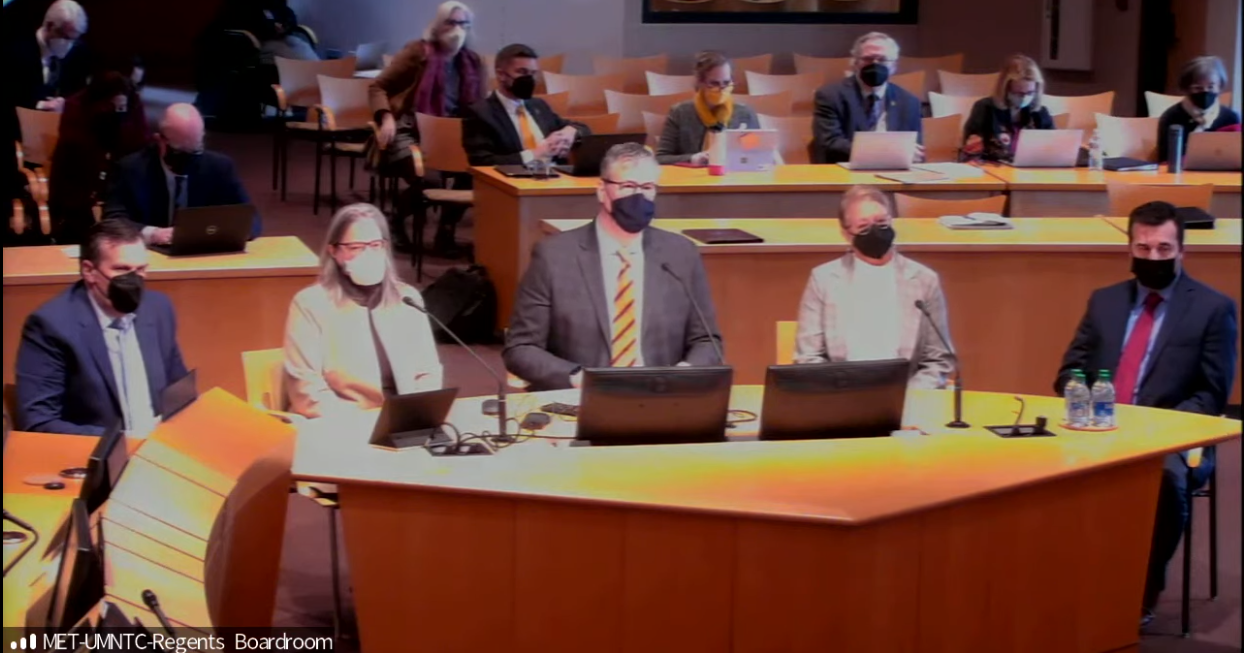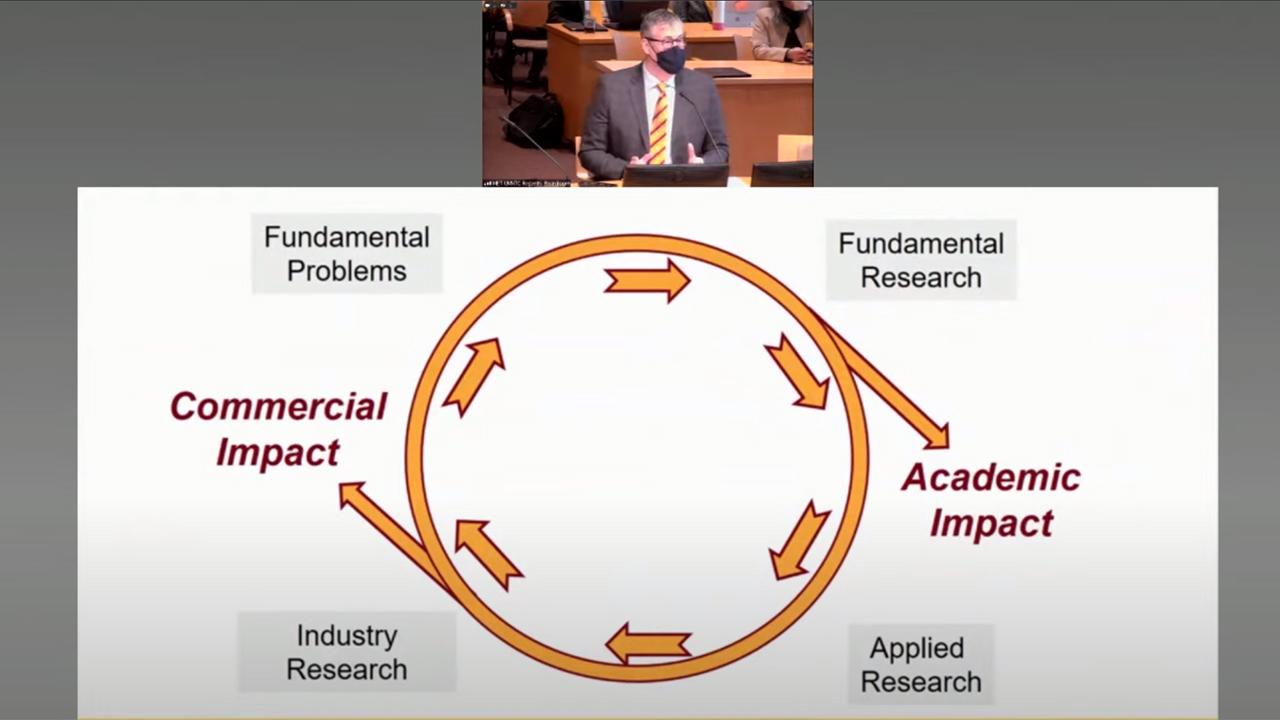
VPR Oakes (center) and his team answer questions from the Board of Regents Mission Fulfillment Committee. From left to right: Rick Huebsch, Katey Pelican, Oakes, Amy Kircher, and Steve Corkery.
On February 10, Interim Vice President for Research Michael Oakes presented to the University’s Board of Regents the University’s framework and rationale for developing place-based collaborations with business and other external partners. At the Board’s request, he outlined how place-based initiatives such as the proposed Innovation Corridor align with the University’s corporate engagement efforts and the University’s MPact 2025 systemwide strategic plan. Watch the full presentation.
“The University of Minnesota is a leading research university, and we want to leverage that strength and participate in the broader ecosystem for development for the state, and to foster health, prosperity, and security.” Oakes said. “I believe there’s a virtuous cycle for research that comes out of university-corporate cooperation, with corporations benefiting from a university’s fundamental and applied research, and universities benefit from new resources, more exposure to real world problems, and the research risk-taking culture that companies bring to the table.”

Interim VPR Oakes presents his virtuous cycle of research connecting academic and industry research at the Board of Regents Mission Fulfillment Committee.
Oakes said his team, which includes the Corporate Engagement Center, Technology Commercialization and SPARC, is exploring what has worked and what has not worked with other place-based efforts.
“We want to move the ball forward to the benefit of the locality, the state and beyond,” Oakes said, touching on the Pittsburgh Innovation District as a relevant example of a thriving urban innovation district. “Our own proposed Innovation Corridor stretches from our Minneapolis Campus through St. Paul, roughly following Metro Transit’s Green Line. It will be a codevelopment effort, not a University dominated effort, that will provide place-based, focused areas to do creative things.”
For their part, members of the Board of Regents expressed excitement for the University’s framework and plans for the Innovation Corridor. “Basically all leaders of corporate R&D groups know that, no matter how good they are … 95 percent of the innovation and the discovery happens outside of their company,” said Board Chair Ken Powell. “And that’s why what you are doing here is so important; because partnerships become everything.”